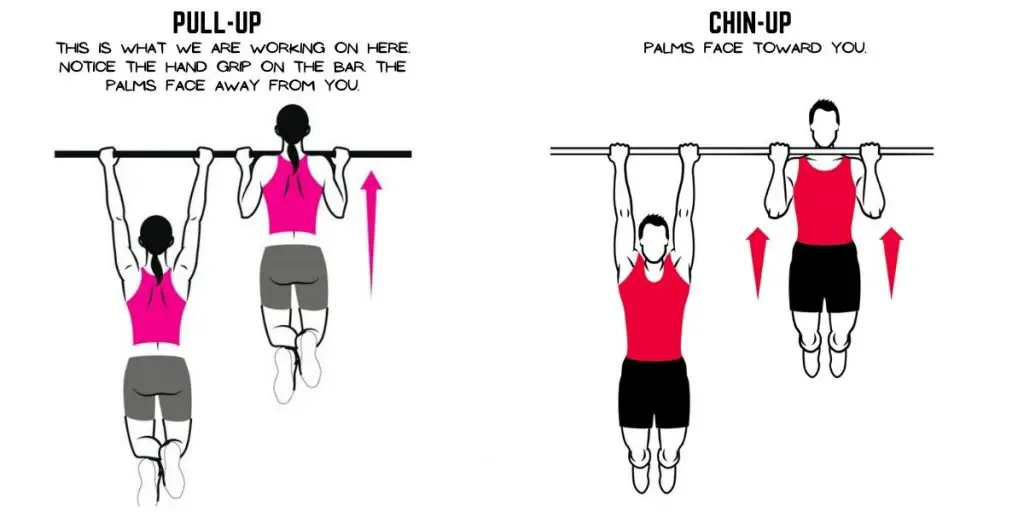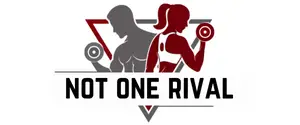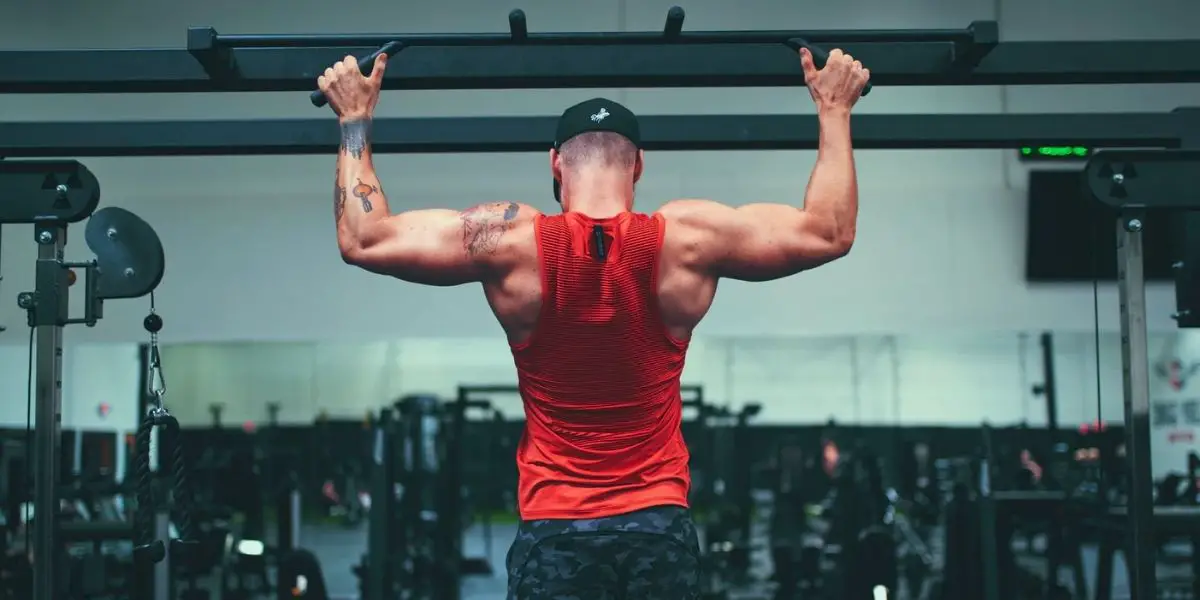A pull-up workout for beginners should be easy enough to stick to, but it should also strengthen and condition the critical muscles so the beginner can progress to an intermediate workout.
Let’s get you started on your pull-up workout for beginners. If you stick with this plan, you will build your shoulders, chest, and arms to the point where you can start a more advanced program. The sky is the limit, but you’re going to have to start on the ground.
What You Need To Start Your Beginner’s Pull Up Routine
All you need, other than yourself, is a good pull up bar. There are more types available than you may think. Some attach to a wall with brackets. Others go between a door frame. There are even free-standing and ceiling-mounted bars.
Most power racks come with pull-up bars built-in.
Consider a good rack if you plan on expanding your exercise routine to include benching and cable workouts. Otherwise, choose one that will fit well in your gym.
There are a few things to keep in mind when shopping for a bar. Most bars are anywhere from one to one and a half inches in diameter. Comfort is the main consideration here. Smaller hands like smaller diameters.
Length isn’t really important. A bar that’s long enough to go in a small door frame is long enough for all kinds of pull-ups.
Knurling is a good idea, especially if you don’t wear gloves. You’ll get a better grip with those sweaty hands.
It dones’t hurt to pick-up a pull-up assist band. I find them to be useful for starters but even after you build some strength. A pull-up assist can help you push longer.
Door Frame Pull-up Bars
These are some of the more popular ones, any of these will do the job
Pull-up Assist Bands
Like the door frame pull-up bars, any of these will work fine. If you pick-up one, make sure it has a loop for your foot. Some of them are just straps of rubber and just don’t work well enough to anchor your weight.
Your Beginner’s Pull Up Workout
So, you have your bar. Now what? Install your bar, First, we’ll look at what pull-ups can do for you. Then we’ll get you ready to do some pull-ups. Finally, we’ll get you started on your program.
What Are The Benefits Of Pull-ups?
Pull-ups are almost a full-body exercise. Your abs act as stabilizers. And of course, there are the muscles of your back, chest, shoulders, and arms. Here are the main muscles that basic pull-ups shred.
- Latissimus dorsi
- Teres major
- Rhomboid
- Choracobrachialis
- Subscapularis
- Pectoralis major
- Pectoralis minor
- Biceps
- Triceps
- Flexor, or grip, muscles of the hand
Check out my post about pull up alternatives to see some other exercises that work these and other muscle groups.
In short, pull-ups can strengthen and add mass to your arms, shoulders, chest, and back. And you’ll see benefits in the real world. Many pro golf, tennis, and other sports players do pull-ups to give them an edge.
How To Do Pull Ups For Beginners
First, you need to learn how to do a pull up the right way. It’s best to start with standard pull-ups and work your way up to variations, like wide and narrow grips and weighted vest pull-ups.

What Exercises Help With Pull-Ups?
Many beginners can’t do a single pull up. That may make you feel like you just can’t do them. That’s not right. You can, but you need to condition your pull up muscles to the point where you can do at least three basic pull-ups.
Take a look at the pull up alternative post I mentioned earlier. Pick one that you can do and work at it until you can do a few pull-ups.
One of the best alternatives for beginners is the negative pull up workout. It works the muscles you need, but it’s way easier. If you stick with it, you’ll be doing regular pull-ups in a few weeks.
To do a negative pull up, position a chair or bench under your bar. It should put your chin right above the bar, as in the upper position of a pull-up. That’s about knee high for most people. Go ahead and grip the bar. Now bend your knees, holding your weight up. Slowly lower yourself into the lower pull up position. That’s one rep.
Do as many reps as you can in one set. Take a break when you can’t do it anymore. 30 seconds is a good rest between sets for a beginner. If you can do two full sets in a single workout, that’s great.
Three would be even better. Work at it at least three days per week. You can work out every day if you can stand it. That’s how you get quick results.
Holds and rows also help to build the key muscles that enable you to do pull-ups. Look into the following exercises and see if some of them will suit you better than negative pull-ups. You may even want to build a routine that incorporates a few of these.
- Hanging hold
- Hollow hold
- Leg pull down
- Lat pulldown
- Bridged row
- Hinged row
- Bent over row
- Deep low row
Pull down generally work the lats. Rows are good for the lats, rhomboid, shoulders, and arms. Holds pretty much work all the muscles that pull-ups do, but they can be less exhausting.
Here’s The Plan
When you can do at least three pull-ups, using proper form, you’re ready to start your pull up workout for beginners.
Test yourself to see how many you can do before reaching the point of failure. In other words, you need to know how many you can do at one time. That will be the number of reps you’ll do each set.
Take a 30-second rest after you hit the wall, then go at it again. If you can do five pull-ups per set, can you do another five after your rest? If so, you’ll be doing two sets per workout. How about three? The idea is you want to do as many reps per set as possible, and as many sets per workout as you can handle.
You may want to start with three pull up workout days per week. You don’t want to overdo it. When you’re comfortable with three, go for four days per week. You can do pull-ups every day if you want to.
Make yourself a chart. It’s easier to stick to a workout plan if it’s laid out on paper right in front of you. Here’s a sample plan that I made for a friend a while back.
If you can follow that plan, you’ll be ready for an intermediate pull up workout routine by week six. You’ll want to customize your workout to suit you, though. Keep in mind that you want to continually push yourself to do more reps and more sets, but you don’t want to overexert yourself.
| Week | Reps | Sets | Days Per Week |
| 1 | 3 | 2 | 2 |
| 2 | 4 | 2 | 3 |
| 3 | 4 | 3 | 3 |
| 4 | 5 | 3 | 3 |
| 5 | 5 | 4 | 4 |
How Many Pull-Ups Per Day For Beginners?
More is better, But if you overstress your muscles, you’ll be totally out of commission until you recover from the damage you’ve done by being too eager. Listen to your body. That feeling of exhaustion in your muscles is normal, especially for a beginner. Your muscles are stretching and tearing, then healing themselves. That’s how they strengthen and add mass to themselves.
But if you’re stiff and sore for a couple of days after a workout, you’re pushing too hard. Do one less set per workout, or take a rep or two out of your set if you’re only doing one set each time. You can always add it back in when you are in better condition.
Conclusion
Now you know how to do pull-ups for beginners. You’ll start seeing benefits almost right away. You’ll feel the burn in the target muscle groups, and you’ll notice that you have more strength and endurance week by week. It could take months to add bulk. But all workouts are long-term commitments.
I hope you enjoyed this post. But I hope even more that you’re ready to start your pull up workout for beginners. Tell us what you think in the comments below. And be sure to drop in from time to time to let us see how you’re progressing. You’ll be ready for a more advanced pull-up routine in no time.
- 5 Best Power Towers For Your Home Gym - July 19, 2023
- What Does Natty Mean in Body Building? Is It Good or Bad? - June 26, 2023
- How Much Creatine Is In Bang? The Amount Might Surprise You - June 25, 2023

